
Hotels in Portugal
Popular Hotels in Portugal
Discover what you like
Destinations to Discover
More about hotels Portugal
Known as the Portuguese Republic, Portugal shares one-fifth of the Iberian Peninsula with ancient but beautiful Spain. It is the most western self-governing state of Europe mainland. Surrounded by the Atlantic Ocean to the north and Spain to the east, Portugal’s territory includes the Atlantic archipelagos of Azores and Madeira. Located in the southwest corner of Europe, Portugal is rectangular. The longest north-south distance is approximately 561 kilometres, and widest east-west distance is 218 kilometres. Its easy dimensions make it hassle-free for tourists to visit in a short time.
The history behind this country is interesting. As the oldest state in Europe, its territory was continuously established, invaded and fought over since the prehistoric times. Since 30,000 BC that was around the ice age, Portugal was already occupied with people. The Portuguese at the time were mostly hunters and fishermen who also gathered plants as their source of food. They wore leather most of the time and made stone tools. Around 5000 BC, the Portuguese were introduced to farming. Only around 2000 BC, bronze was introduced to them. Later in 700 BC, the Celtic tribes entered Portugal from the north and introduced iron. Around 800 BC, the Phoenicians from Lebanon started trading with the Portuguese. By 600 BC, the Greeks began to trade with Portugal. In the 5th century, the Roman rule in Portuguese ended. Then, Germanic people invaded the Iberian Peninsula, and a race known as the Suevi invaded Portugal. Then, in the 6th century, another race called the Visigoths governed Spain and attacked the Suevi. After the Visigoths conquered the Suevi, the Germanic invaders became the new elites. They consisted of landowners and warriors who were against trading. Thus, the Jews dominated trading at that particular time. In the early Middle Ages, Moors from North Africa entered the Iberian Peninsula. They dominated and ruled southern Portugal for centuries long but not northern Portugal. A small Visigoth state slowly formed in the north and at the 11th century, it was known as Portugal. Trade continued to improve and develop, and Jews remained to be significant in the towns. In 1211, the first parliament met, and only ministry and nobility were presented. This changed when King Dinis permitted the merchant class to send representatives as a sign of their significance. From the middle of the 13th century, Lisbon became the capital of Portugal. The very first university in Portugal was founded in Lisbon in 1290. The agricultural field started to develop in the ruling of King Dinis since pine forests were planted and marshland was cleaned for farming. In 1348 to 1349, Portugal was troubled by the Black Death that took away almost 33% of human lives. In the 15th century, Portugal became a great maritime country. Madeira was discovered in 1419 followed by the Azores in 1427. Moving on to the 16th century, the Portuguese decided to conquer the spice market in Asia. Asia was the source of spices which were very pricey in Europe so they realised that massive profits could be gained by importing the spices by sea. They first dominated the spice trade and seized Goa in India. In 1511, they dominated Malacca in Indonesia. Then, they went to China and established a trading post at Macao. After dominating the spice trade with Asia for a long time, they lost it to the Dutch in the 17th century. Gold and diamonds were discovered in Brazil in the late 17th century. Taxes on them eased the Portugal coffers. Moreover, Portuguese achieved a naval victory over the Turks at Matapan in 1717. In 1703, Portugal signed the Methuen Treaty with England which enhanced the exports of wine to England. In 1807, Portugal was invaded by a French army. A year later, a rebellion against the French started in Spain and Portugal. The British sent a force to Portugal, and three years later, the French were forced out of Portugal. A revolution happened in 1820 without the presence of the King who fled to Brazil when the French came. A group of army officers gained power, and a new constitution that was disliked by most was formed. In 1821, the king returned and accepted the new constitution, but the queen declined. Their son, Pedro, stayed in Brazil. Brazil then left from Portugal and became independent. The king died in 1826 and Pedro who was the emperor of Brazil did not want to rule Portugal. The throne was renounced to his young daughter while her uncle Miguel acted as an advisor. In 1828, with the support of conservative forces, Miguel became the king. In 1831, Pedro fell from power as the emperor of Brazil. He ran to Europe and announced himself as a regent of Portugal rather than his brother. In 1832, a rebel army and British supporters came to Portugal to fight for Pedro. The fight which lasted for two years had Miguel deported. Portugal was then divided between strong traditional monarchy and liberal constitution. In 1838, a new constitution was introduced after continuous demands from liberals. Unfortunately, the conservatives were furious, so a civil war of two years erupted between them. The war ended after the involvement from foreign powers. In the late 19th century, some European countries were formed, but Portugal remained poor. A lot of unfortunate Portuguese had high hopes and saw no progress in their living standards. In 1926, the army took in charge. In 1928, Antonio de Oliveira Salazar became the finance minister, and in 1932 he was the prime minister. He came up with a new constitution and was accepted in a referendum. Salazar became a real dictator who formed a secret police force, censored press and banned political parties. Salazar spent money on public works, and the industry flourished. The urban population developed, but poverty continued to spread. In 1968, Salazar resigned due to poor health and was replaced by Marcelo Caetano. A constant dissatisfaction in the army had led to the formation of Movimento das Forcas Armadas (MFA). In 1974. The army started a revolution. People came in with red and white carnations to support the coup. It was then known as the Carnation Revolution. Finally, democracy was restored in Portugal. Portugal joined the E.U in 1986 and Euro in 1999. Now, Portugal is famous for its olives, wheat, tourism, wine and cork. Just like Europe, Portugal too suffered in the recession of 2009, but it got back on the track quick. Unfortunately, it suffered from critically high unemployment in 2017.
The main regions in Portugal are Porto and North, Coimbra and Central, Alentejo, Lisbon, Algarve, Madeira and Azores. Its capital is Lisbon which is the largest city in Portugal. In the present, Portugal houses almost 11 million people. For Singaporeans who wish to travel to Portugal, a tourist visa is not required for a stay up to 90 days. A business visa is not required too. However, be sure to check the current validity of the passport and be sure to have blank visa pages. Portuguese is the main spoken language in Portugal, followed by English, Spanish, French, Mirandese and Portuguese sign language.
Portugal’s climate is generally the Mediterranean. The southern parts are dry and sunny with hot summers and rainy or mild winters. The weather is cooler and damper in the north, with potential sightings of snow in the mountains of the northeast. The Azores Island has modest Marine climate while Madeira and Porto Santo are subtropical with dry weather.
How to Get There?
By Flight
The easiest and fastest way of travelling to Peru is by plane. Going there by plane from Singapore Changi Airport with one stop would cost around SGD 1200. The fastest one-stop flight would take around 18 hours. Cheaper flights with longer flight time and more stops are available if you are on a tight budget.
What to Do There?
Oceanario de Lisboa
Located in the capital of Portugal, this massive oceanarium houses a wide range of aquatic creatures from four different ecosystems which are the Antarctic, Atlantic, Pacific and Indian Oceans. Visitors can see rays, penguins, sharks, sea otters and many more. This attraction is perfect especially when you have children coming with you. To educate the public on marine conservation, the tickets are priced at SGD 17 for a child or senior and SGD 25 for adults. It opens daily and the tickets purchased are available for an entrance until 120 days from the date bought.
Furnas Lake
If you are a nature type of person, head on to Furnas Lake. Known as one of the popular spots in the Azores, Furnas Lake is located over the eastern part of three active volcanoes on the island. This instaworthy spot is famous for its clear blue waters, greeneries coating the hills and bubbling hot springs. You can make your visit adventurous and beautiful by hiking past the calderas while enjoying the picturesque scenery. Not only that, but you can also go canoeing to get a wonderful close-up view to the breathtakingly stunning multi-hued waters.
Where to Stay?
InterContinental Lisbon
Situated in the capital of Portugal, Lisbon, this five-star hotel is worth staying. Priced from SGD 262 per night, this hotel offers you a memorable experience in Portugal. Surrounded by attractions like Edward VII Park, Marques de Pombal Square, Amoreiras Shopping Center and El Corte Ingles Shopping Center. Its efficient hotel services are a 24-hour receptionist, concierge, laundry service, express check-in and check-out, a newspaper in lobby, laundry service, luggage storage, multilingual staff, tours babysitting with surcharge and wedding service. The public facilities like safety deposit box, restaurant, elevator and Wi-Fi are also available for hotel guests. Hotel guests who are on business trips can enjoy the business facilities like a business centre, conference room and meeting facilities. With all mentioned above, this hotel is a go!
Adegas do Pico
Located in the Azores, this villa gives you the home feeling while travelling. Priced from only SGD 83 per night, guests can choose to live in a house with one, two or three bedrooms. The services provided are front desk, laundry service, luggage storage, tours and babysitting with surcharge. Guests can have a barbecue party, stroll in the garden and enjoy the free Wi-Fi provided. This villa also caters the need of those who are on business trips.
Facts about hotel in Portugal
Total Accommodation | 20 Properties |
Popular Region | Lisbon, Madeira |
Popular Hotel | InterContinental Hotels LISBON by IHG, an IHG Hotel, Altis Avenida Hotel |
Frequently asked questions

Guest reviews hotel in Portugal
Why book Accommodation in Traveloka?



We’ve got more than just hotels
What interests you?





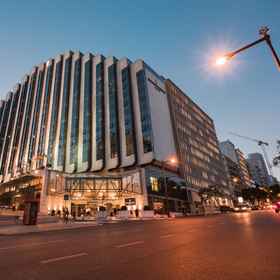
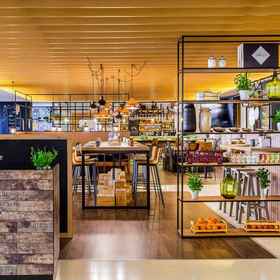

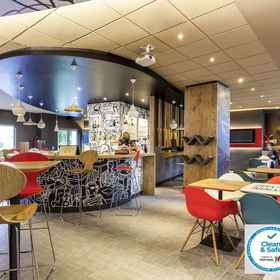


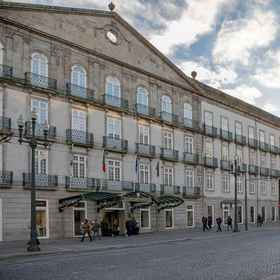




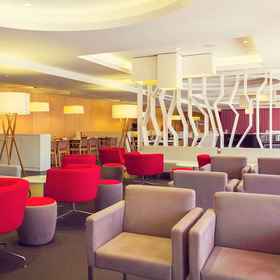







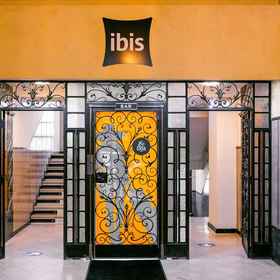






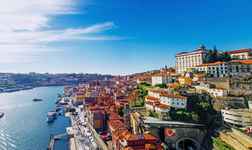






 Facebook
Facebook Instagram
Instagram TikTok
TikTok Youtube
Youtube Telegram
Telegram